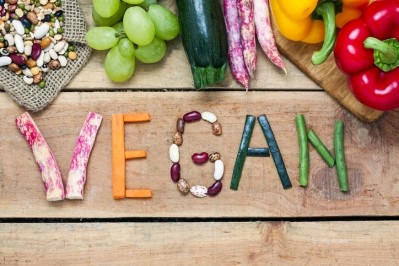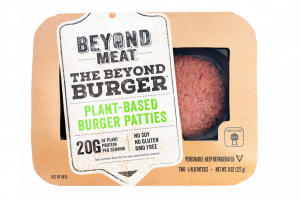Europe leads in innovation as meat-free demand grows

European consumer interest in alternative protein sources is on the rise, with a growing number of shoppers mindfully working to reduce their meat consumption.
According to forecasts from research firm Allied Market Research, the global meat substitutes market is expected to grow by around 8.4% through to 2020.
Europe is the largest market for meat substitutes accounting for 39% of global sales. While demand is expected to grow at a faster pace in Asia, European consumers look set to remain at the forefront of the alternative meat revolution.
Better for you and the planet
The category sits at the lucrative intersection between health and ethical consumerism.
Changing social dynamics, such as the deep reach of social media, mean shoppers are encouraged to think about how their purchases impact the world around them. Issues around health, sustainability, traceability and animal welfare have more sway over purchasing decisions today than ever before.
As a result, meat-free protein products are no longer exclusively the preserve of the relatively narrow consumer group that identifies as vegetarian or vegan. A so-called ‘flexitarian’ approach to diet is gaining in popularity and the appeal of plant-based foods is broadening to include people who also incorporate meat and dairy in their diets.
This is largely being driven growing awareness of a causal link between high meat consumption and non-communicable diseases. Consumers are increasingly accepting that they need to reduce their meat intake to improve their health and combat the obesity epidemic as well as rises in other NCDs.
This understanding is supported by a mounting body of evidence, prompting health campaigners, professionals and regulators to deliver a consistent message around the benefits of eating less meat.
In a study published in the British Medical Journal researchers at the US National Cancer Institute linked high red meat consumption to a 26% spike in the chances of contracting nine NCDs, including cancer, type 2 diabetes, strokes and even Alzheimer's.
Meanwhile, a study published last year by researchers from the University of Oxford, ‘Analysis and valuation of the health and climate change co-benefits of dietary change’, found that if a ‘healthy’ diet was adopted globally, millions of lives would be saved.
If a 'healthier global diet' became the norm by 2050 it could prevent 5.1m deaths a year because eating less meat reduces the prevalence of chronic non-communicable diseases associated with high body weight and unhealthy diets, the researchers concluded.
Engagement on environmental issues associated with meat production is also rising.
Conventional methods of industrialised livestock rearing are one of the largest contributors to C02 emissions globally. Data from think tank Chatham House suggests that meat production accounts for around 15% of carbon emissions – roughly equivalent to the greenhouse gasses emitted by all of the world’s vehicles. Livestock also places pressure on land usage and farm animals consume 8% of the world’s water supply.
In the UK, for instance, 25% of meat consumers claim that concerns about the environment have caused them to cut back on the amount of red meat they eat, research from Mintel suggests.
This trend is also generational, with millennial consumers the most likely to link environmental considerations to efforts to reduce meat consumption. Nearly four-in-ten 16-34-year-olds in the UK are eating less meat to reduce their impact on the environment, the study found. Significantly, this demographic appeal means that demand for alternative protein sources looks set to continue its growth trajectory in the medium- and long-term.
Innovation supporting growth
The European food sector – which is otherwise facing relatively flat consumption trends - has been quick to capitalise on growing consumer interest in this area. Globally, European food makers are leading the way in terms of meat-free innovation.
Data from Mintel shows that seven out of the top ten markets for alternative protein product launches are European. “In the three years ending June 2017, Germany led global innovation in meat substitutes, followed by France, Sweden, Italy and the UK. However, Germany’s share of innovation declined in the year ending June 2017 as innovation intensified in Sweden and Italy,” Mintel analyst Patty Johnson revealed.
In Italy, Johnson said the uptick in NPD activity is a result of massive increases in consumers who claim to be working to reduce their meat consumption. Around half of Italian consumers say they are lowering their red meat intake, while 24% say they are increasing the amount of vegetarian processed foods in their diet, she noted.
Meanwhile, in Sweden, the demand driver is retail-based, Johnson continued. “In 2016, two of Sweden’s largest supermarket retailers, Coop and ICA, launched campaigns aimed at increasing consumer awareness around the environmental impact of eating meat, while also promoting the uptake of meat alternatives as healthier and more humane,” she explained.
What markets offer most potential?
While Sweden has among the highest NPD rates in the alternative protein space, Euromonitor International analyst Pinar Hosafci believes that the country also has the “highest future potential”.
Hosafci attributes this to “favourable legislation, innovative local brands, rising availability and the affordability of plant-based options” in the country.
Europe’s other large markets are also prime targets for manufacturers of alternative proteins, the analyst continued. “Together with the UK and Germany, the Netherlands is set to become one of the most attractive markets for plant-based snacks [while] the Italian market is growing ahead of many emerging markets.”
Growth in the alternative protein sector in these developed European markets is significantly higher than that of the overall food sector, which is marked by sluggish consumption patterns. As a result, many food makers working to deliver organic sales are turning to alternative proteins as an answer.


















